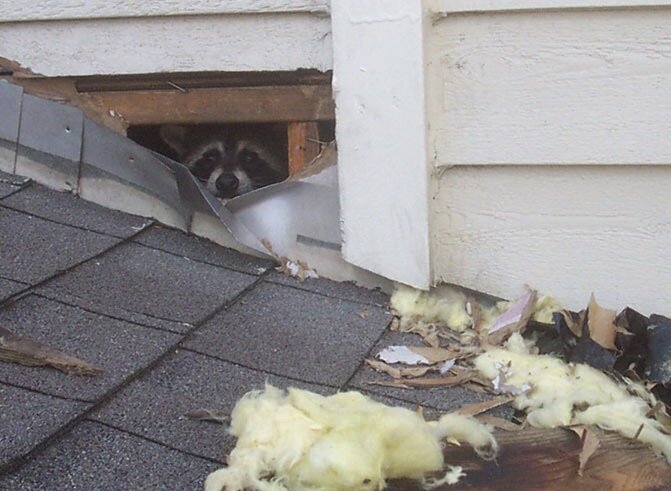raccoon (Procyon lotor)
Raccoon Biology
The adult raccoon is a stocky mammal about 2 to 3 feet long and weighs 7 to 30 pounds. It is distinctively marked with a black “mask” over the eyes and is heavily furred with alternating light and dark rings around its tail. Young are generally born in April or May, but earlier and later litters are not uncommon. Litter size ranges from three to six young.
Raccoon Behavior
Raccoons are omnivorous, eating both plants and animals. In urban settings, in addition to feeding on backyard fruits, nuts, and vegetables, they scavenge from garbage cans and compost piles. Pet food left outside overnight ranks high as a food resource, and some people intentionally provide food for raccoons. Bird feeders provide another dependable food source for raccoons.
Raccoon Concerns
Common problems occur when raccoons look for nesting sites in buildings. Females in search of nesting sites may rip off shingles, fascia boards, or rooftop ventilators to get into the attic. Once inside the attic, insulation on walls may be torn up and displaced; and insulation on heating and air conditioning ducts may be ripped off and destroyed. Raccoons may begin using an area of the attic for a latrine, and the ceiling beneath may become stained with urine, accompanied by an objectionable odor.
Raccoon Control
For the average homeowner unfamiliar with trapping raccoons, it is advisable to hire a professional wildlife control operator to remove the animal. The professional will have the proper equipment to accomplish the task and will be able to tell if a trapped female is nursing its young. This is very important because you don’t want to leave young behind to starve.




